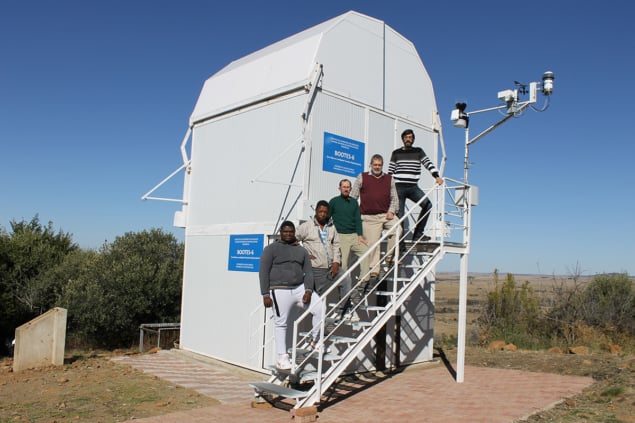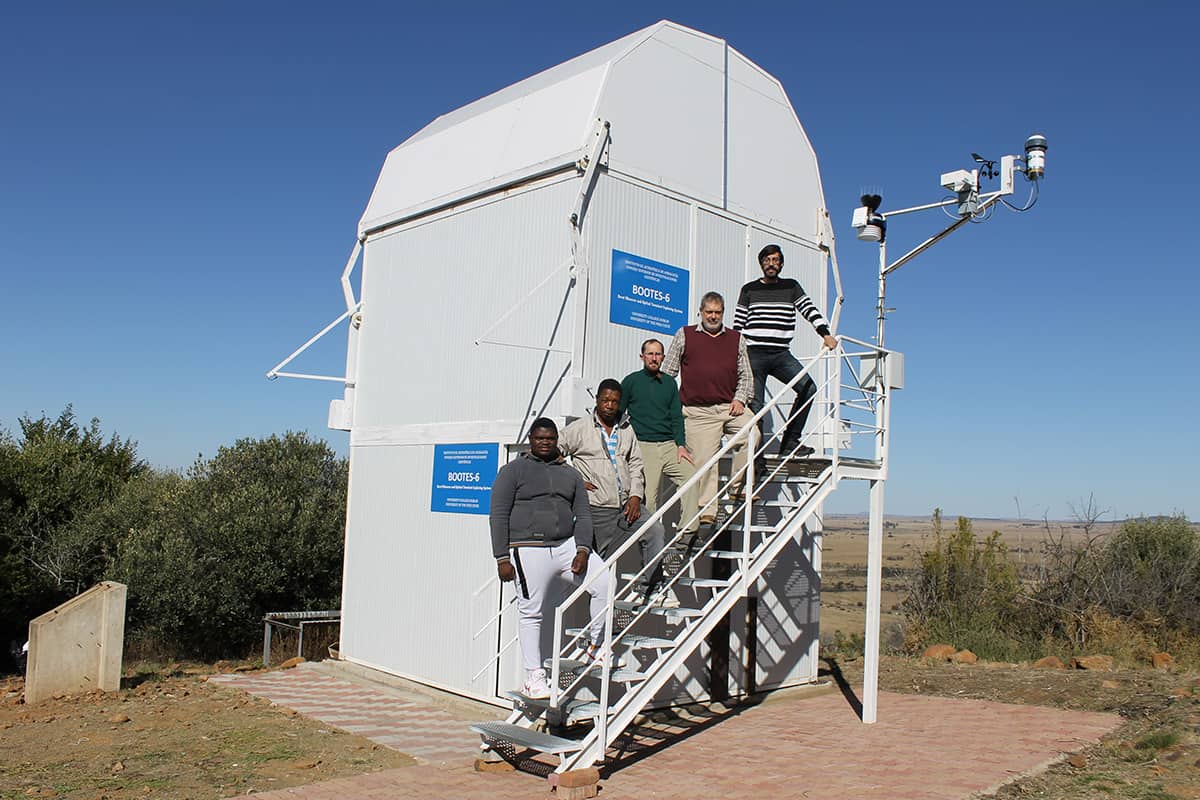 A new optical telescope in South Africa that will measure the brightness of transient sources will begin operation in mid-July. Located at the Boyden Observatory in Bloemfontein, the telescope – a collaboration between South Africa’s University of the Free State, University College Dublin (UCD) and the Institute of Astrophysics of Andalusia in Spain – will be used to study the afterglow from extremely energetic astrophysical events.
A new optical telescope in South Africa that will measure the brightness of transient sources will begin operation in mid-July. Located at the Boyden Observatory in Bloemfontein, the telescope – a collaboration between South Africa’s University of the Free State, University College Dublin (UCD) and the Institute of Astrophysics of Andalusia in Spain – will be used to study the afterglow from extremely energetic astrophysical events.
Transient events often appear in the sky briefly before disappearing. The telescope – dubbed the Burst Observer and Optical Transient Exploring System (BOOTES 6) – is equipped with an extremely sensitive CCD camera to detect these faint events and it has an incredibly fast “slew rate”. This means that when an alert of a gamma-ray explosion is reported, the telescope can observe it within a few seconds, which is crucial when monitoring transient events.
Astronomer Pieter Meintjes, who is head of astrophysics at the University of the Free State, says the group is “ecstatic” about the fast slew rate as it will allow quick data collection and give the team an edge over rival groups.
Studying extreme events
One of the main aims of the telescope will be following up on the afterglow that is produced during gamma-ray bursts that are created when very massive stars form black holes or when neutron stars collide.
“By observing the afterglow and monitoring how it fades away over time allows astronomers to pin-point the location of the explosion and also establish what kind of explosion it was,” says Meintjes, who adds that the researchers are planning to put a spectrograph on the telescope, which will allow them to determine what elements are forged in these extreme events.

New dawn for South African radio astronomy as major telescope nears completion
Work began on the telescope two years ago, but efforts were hampered by the COVID-19 pandemic with engineers only being able to assemble the telescope in April. The telescope’s hardware was funded by the Institute of Astrophysics of Andalusia while the University of the Free State built the observing dome.
The Boyden telescope joins other BOOTES telescopes that are located in China, New Zealand, Mexico and Spain – in the search for transient events.
The new telescope is the second observatory to be hosted by the University of the Free State after the 0.41 m Watcher telescope, which has been managed by UCD since 2001.
